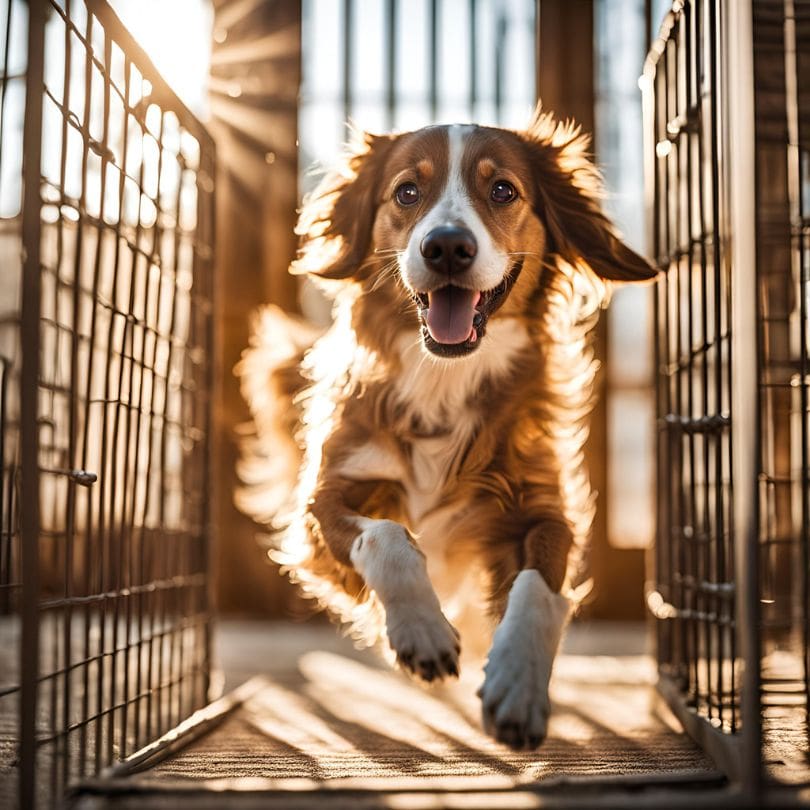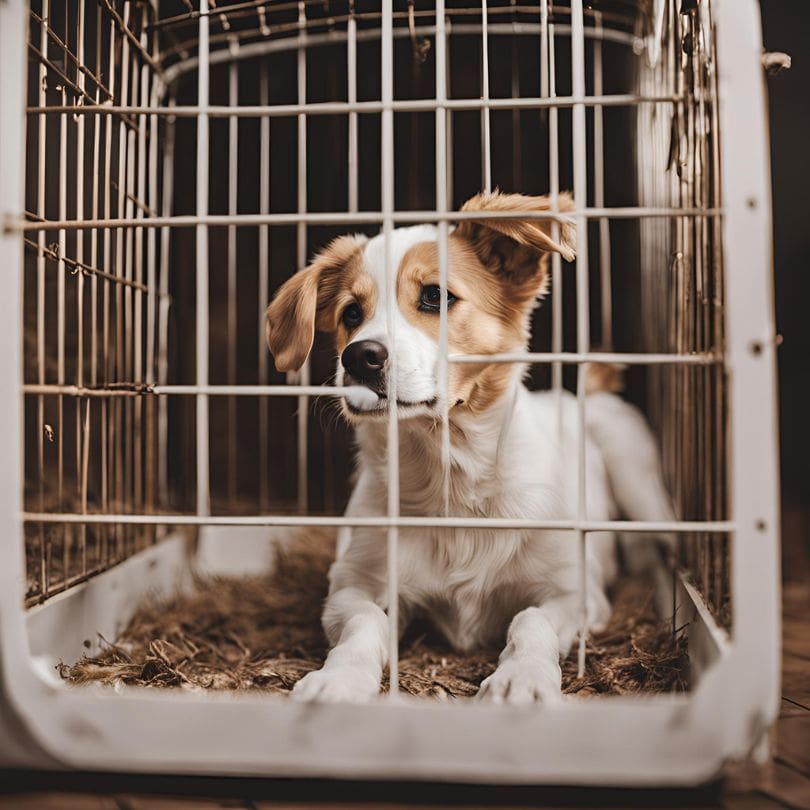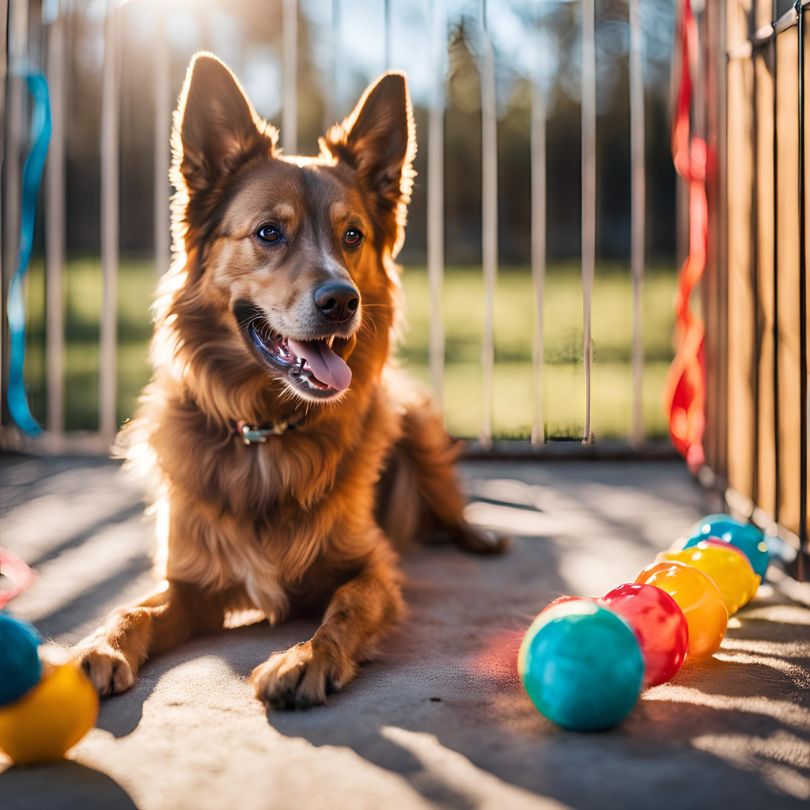Choosing the right cage for your dog is more than just a matter of size; it’s about creating a space where your pet feels safe, comfortable, and at ease.
Dogs are loyal and intelligent animals with diverse personalities, and the cage you choose should reflect both their size and temperament. In this guide, we’ll explore the factors to consider when selecting a dog cage that aligns with your dog’s needs and personality.
1. Assess Your Dog’s Size and Growth Potential
The cage must fit your dog comfortably, allowing them room to stretch, lie down, and turn around easily. Here’s how to gauge the right dimensions:
• Measure Your Dog: Measure your dog from nose to base of tail (for length) and from paw to top of the head (for height). Ideally, the cage should be at least 1.25 times the length and height of your dog to ensure a comfortable fit.
• Consider Growth: If you have a puppy, account for their growth by choosing a cage that fits their future size. Many cages come with dividers, allowing you to adjust the space as your puppy grows.
• Weight Capacity: Ensure the cage can support your dog’s weight. Larger breeds like Great Danes or Saint Bernards require heavy-duty cages to provide adequate support.
2. Choose a Cage Based on Your Dog’s Personality
Dogs, like people, have unique personalities that influence how they feel about a cage. Here are tips for different temperaments:
• Energetic and Playful Dogs: If your dog is full of energy, consider a larger cage with added space to move around and chew toys to keep them entertained. These dogs may benefit from a cage with more ventilation and space, as they’ll be spending time moving about.
• Anxious or Shy Dogs: Timid dogs often feel more secure in an enclosed space. Look for a cage with privacy covers or add a blanket over part of the cage to create a “den” effect. Soft bedding can also help anxious dogs feel safe.
• Independent Dogs: Some dogs enjoy their alone time and may appreciate a well-sized cage with a cozy bed and a few toys. Choose a cage that allows them easy entry and exit, especially if they’re accustomed to roaming freely.

3. Select Safe and Durable Materials
Safety is paramount when choosing a cage. Not all cages are built equally, so it’s essential to prioritize quality materials for your dog’s comfort and security.
• Non-Toxic Materials: Choose cages made from non-toxic materials, especially if your dog tends to chew on surfaces. Heavy-duty plastic or rust-resistant metal are ideal for durability and safety.
• Sturdy Construction: Ensure the cage is made from materials that can withstand wear and tear, especially if your dog is strong or tends to move around actively within the cage.
• Secure Latches and Locks: Active dogs may try to open cage doors, so look for cages with reliable, secure latches. For extra security, opt for double-lock mechanisms to prevent accidental escapes.
4. Consider Portability and Placement
Think about where you’ll be using the cage most frequently. If you plan on moving it around the house or using it for travel, portability will be an important feature.
• Portable Cages: For those who travel often, lightweight and foldable cages are excellent options. Many travel cages are designed with handles, wheels, or carrying straps, making transportation easier.
• Permanent Setups: If the cage will stay in one location, a more robust, stationary cage might be ideal. Place it in a quiet corner where your dog can observe their surroundings without feeling overwhelmed. Make sure it’s in a temperature-controlled area and away from loud noises.

5. Look for Extra Features and Accessories
Accessories can greatly improve your dog’s comfort in their cage. Some extra features to consider include:
• Dividers for Adjustable Space: Many cages come with dividers, allowing you to customize the space to suit your dog’s size and growth. This is especially useful for puppies or multi-dog households.
• Removable Trays and Pads: Removable trays make cleaning easy, ensuring that your dog’s environment remains hygienic. Soft pads or washable bedding also enhance comfort.
• Built-in Food and Water Bowls: For extended cage time, built-in bowls that secure to the cage walls prevent spills and keep water and food accessible without cluttering the space.
6. Prioritize Comfort and Ventilation
Proper airflow and comfort are essential for your dog’s well-being, especially during warm weather.
• Adequate Ventilation: Ensure there are enough open or mesh sections to allow airflow and prevent overheating. This is particularly important for larger breeds and during warmer months.
• Comfortable Bedding: Dogs are more likely to accept their cage if it’s cozy. Add a comfortable bed or pad that’s easy to clean, as dogs often prefer a soft surface to lie on.
FAQs About Choosing a Dog Cage
To address some common questions, here are a few tips and clarifications on choosing a cage that’s a perfect fit:
• What’s the Ideal Cage Size for Large Breeds?
For larger breeds, look for cages with a minimum height of 32 inches and enough room for the dog to stretch fully. Many large dog cages also have reinforcement bars to increase durability.
• Should I Cover the Cage?
For dogs who feel safer in a darker, enclosed space, covering the cage with a blanket or using a cage cover can create a den-like atmosphere, reducing anxiety and promoting relaxation.
• Can I Use a Dog Cage Outdoors?
Outdoor cages should be made from weather-resistant materials and have adequate ventilation. However, dogs should not be left in cages outdoors for extended periods, especially in extreme temperatures.
• How Do I Make the Cage More Inviting?
Add familiar items like your dog’s favorite blanket or toy to make the cage feel more like home. Regularly clean the cage and ensure it’s comfortable to encourage your dog to spend time in it.
Choosing a cage for your dog involves careful consideration of size, personality, safety, and comfort. By focusing on your dog’s unique needs and lifestyle, you can create a safe haven that they’ll enjoy. Remember, a cage should never feel like confinement but rather a cozy retreat where your dog can feel secure. Make thoughtful choices, and you’ll soon find your dog feels right at home in their new space.

